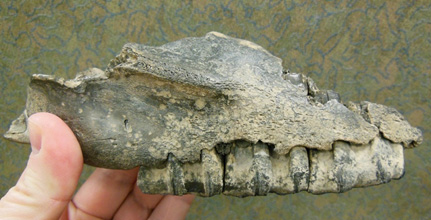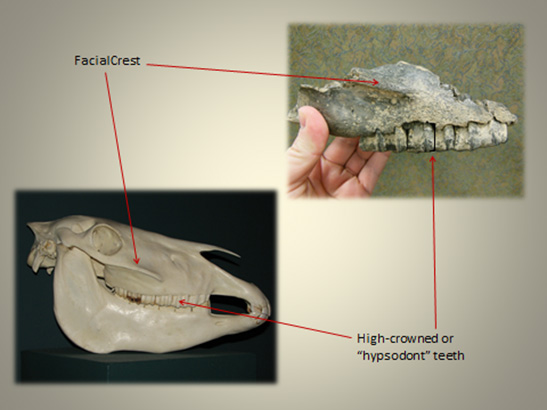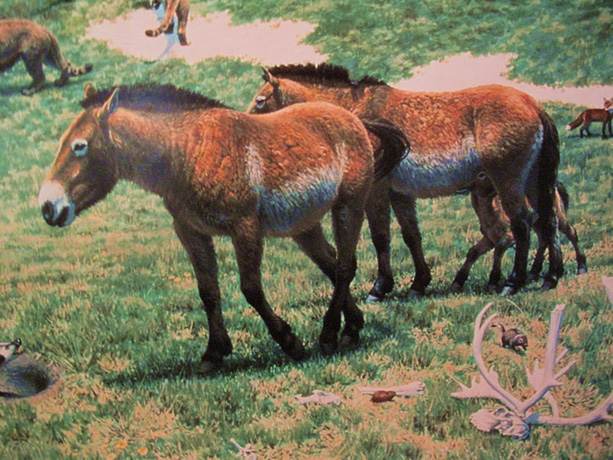
Prehistoric Horse (Equus sp.) maxilla


The prehistoric find compared with a modern horse skull. Arrows point to identifying features on the bone that help us to determine the bone belonged to a horse.
A very brief history of the prehistoric horse in North America:
The oldest known ancestors of the modern horse, members of the genus Equus (which includes zebras and donkeys), date to ~3.5 million years ago and were found in Idaho. There were over 50 species of horse described from the Pleistocene epoch (~2.5 million years ago to 11,700 years ago) in North America alone! Despite these numbers, all members of the genus disappeared from the continent by approximately 12,000 years ago. Why they vanished is hotly debated, though it is likely linked to grasses of the steppe ecosystem giving way to shrub tundra as climate shifted around 12,500 years ago. Archaeological evidence suggests humans also arrived in Alaska around this time. Early European explorers reintroduced the horse to the Americas in the late 1400's to early 1500's.

Artist's depiction of North American Ice Age Horses in the arctic.
